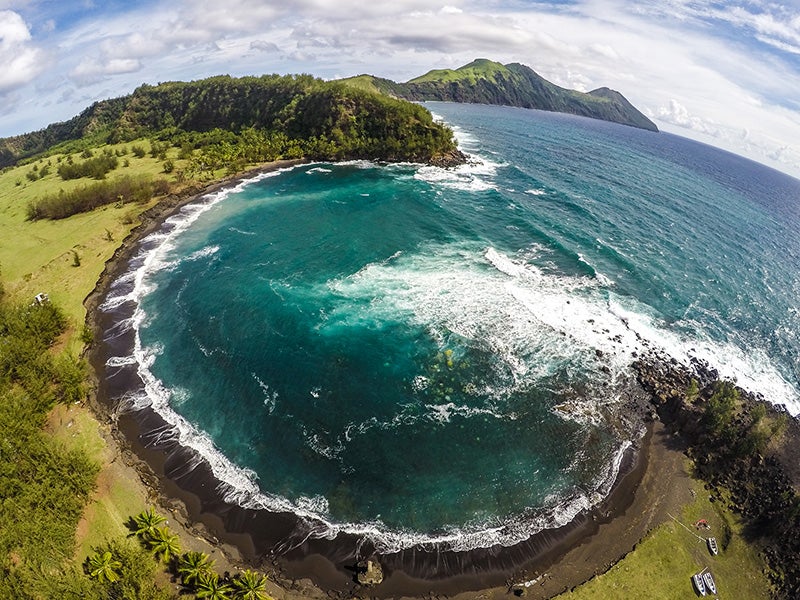Defending the Northern Mariana Islands
The training would destroy native forests and coral reefs, kill native wildlife—including endangered species—and destroy prime farmland. Cultural and historic sites would be destroyed. Indigenous Chamorro and Refaluwasch (Carolinian) families evacuated from Pågan in 1981 would never be able to return, their former home turned into a militarized wasteland.
Regional Office / Program
Case Overview
Plans by the U.S. Navy to transfer 5,000 Marines from Okinawa to Guam and begin staging massive, live-fire war games on the islands of Tinian and Pågan in the Commonwealth of the Northern Mariana Islands would severely disrupt communities on Tinian and shatter the dreams of families who want to return to live permanently on Pågan.
The training proposed for Tinian and Pågan would be intense and destructive. War games would include artillery, mortars, rockets, amphibious assaults, attack helicopters and warplanes and, on Pågan, ship-to-shore naval bombardment. The training would destroy native forests and coral reefs, kill native wildlife—including endangered species—and destroy prime farmland.
Communities on Tinian—mostly indigenous Chamorro and low-income residents—would be subjected to high-decibel noise, as well as restricted access to traditional fishing grounds, cultural sites and recreational beaches. Cultural and historic sites would be destroyed. Indigenous Chamorro and Refaluwasch (Carolinian) families evacuated from Pågan in 1981 would never be able to return, their former home turned into a militarized wasteland.
Tinian is a small island with a population of just over 3,000. Currently, the only live-fire training conducted there is limited to a sniper target range. No training currently takes place on Pågan, a remote island that has been largely uninhabited since a volcanic eruption in 1981 forced evacuation of the local population. Many former residents and their children would like to return to live on the island.
The groups represented by Earthjustice have been fighting this proposal since it was first made public in 2013.

Case Updates
Case page created on April 14, 2016.
